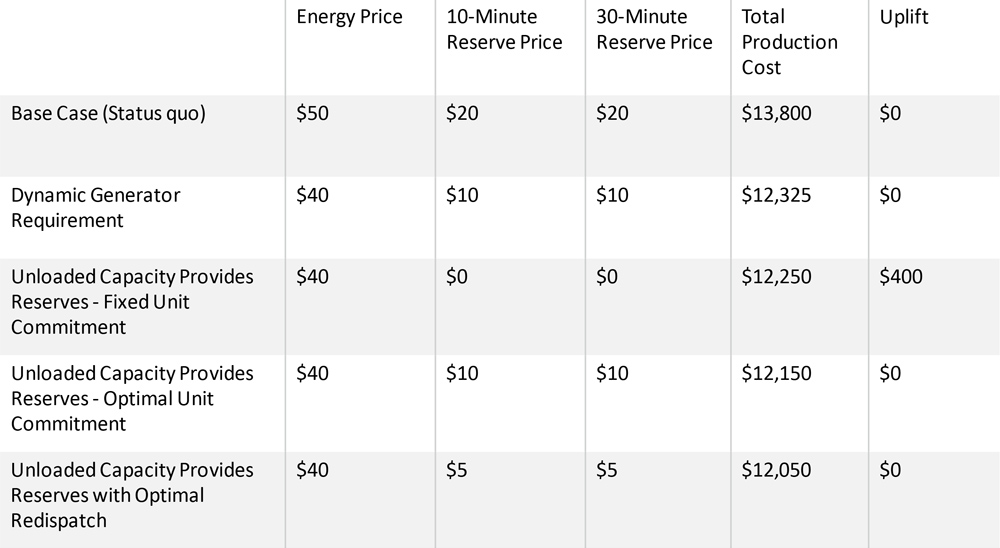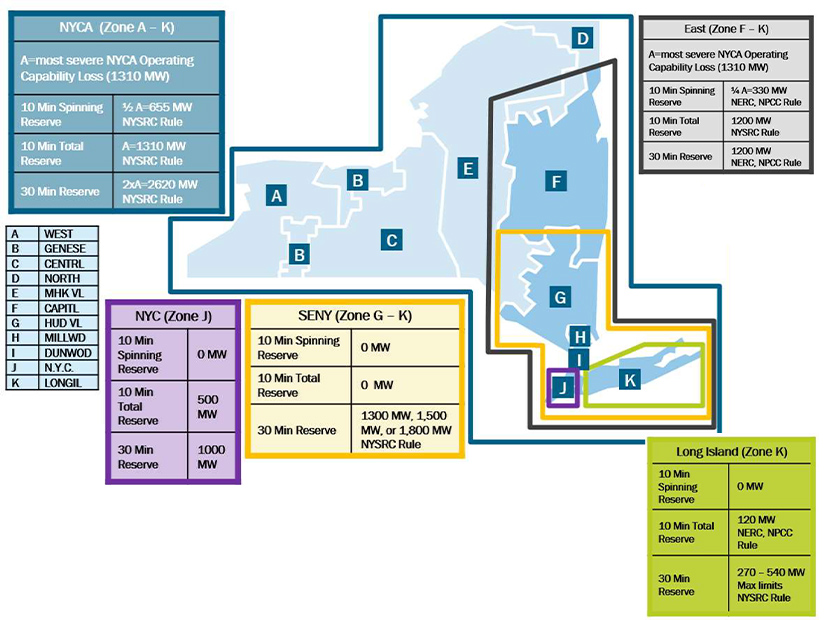NYISO’s proposed dynamic reserve requirements could result in significant changes in transmission flows and reduced costs, according to the findings that FTI Consulting presented to the NYISO Installed Capacity Working Group (ICAPWG) last week.
FTI’s Scott Harvey described how each element of the dynamic reserve design, first published in a white paper in December 2021, could result in reduced costs of meeting load, while maintaining reliability and meeting reserve targets.
The ISO’s project was conducted to see if dynamically scheduling reserve requirements or procurements for generators could support New York’s Climate Leadership and Community Protection Act (CLCPA) by allowing more economic clean energy to be imported into the state, which would better align market outcomes with system operations. (See NYISO Exploring Dynamic Reserves.)
 Summary of FTI Consulting examination of new dynamic reserve project | FTI Consulting
Summary of FTI Consulting examination of new dynamic reserve project | FTI Consulting
NYISO’s existing operating reserve requirements are static; the white paper argued that a dynamic approach would “allow for appropriate reserves to be procured to cover the largest contingency,” while also allowing “for more reserves to be scheduled in cost-effective areas to meet the reliability needs,” which has become increasingly important as more intermittent generators are installed.
FTI’s study highlighted how dynamic reserve requirements can save money by replacing imported megawatts during periods of constraint with those directly from generators in load pockets.
Mark Younger, president of Hudson Energy Economics, commented how the proposal “is a pretty significant change from how things are currently done,” as it would “make contingency based on the actual loading of the unit rather than its capacity,” which he believes the ISO should make “very clear to stakeholders.”
FTI plans to return later in the year to share more examples of how dynamic reserve requirements will impact the system, including instances where intermittent resources are in load pockets.
Tariff Revisions on CRIS
NYISO also continues to work on proposed tariff revisions that would modify its rules for deactivated facilities with unexpired capacity resource interconnection service (CRIS).
The ISO’s Juan Sanchez told the ICAPWG that stakeholder feedback received on the tariff revisions discussed at previous meetings were mostly requesting additional “clarification around the rules.” The project is investigating ways to tighten the rules for CRIS retention where it is not fully utilized, while also increasing capacity deliverability headroom and potentially lowering the cost of market entry for future facilities. (See NYISO Proposes Changes to CRIS.)
 Summary of proposed tariff revisions for the CRIS expiration evaluation project | NYISO
Summary of proposed tariff revisions for the CRIS expiration evaluation project | NYISO
NYISO wants to modify the rules and processes for deactivated facilities with unexpired CRIS by allowing them to voluntarily relinquish their full CRIS at any point in time simply by notifying the ISO. It would develop a standardized notification form, which, once received, would prompt it to stop including the facilities in future deliverability studies.
The revisions would also expire partial CRIS rights for transmission facilities limited from using their full CRIS because of physical limitations in neighboring control area systems. This provision would apply to transmission facilities that are not meeting ISO procedures because their net megawatt output is not reaching full capability, reducing their CRIS to the maximum monthly amount of energy demonstrated during a consecutive three-year period starting from initial synchronization.
They would also allow for same-location CRIS transfers to have the same flexibility as those between different locations. Units in the process of shutting down, or mothballing, would be allowed to transfer part or all their CRIS to a same-location facility even while the unit is deactivating.
Doreen Saia of Greenberg Traurig raised the point that the revisions need to take physical withholding rules into account because there will be facilities “not necessarily retiring until some future point” but are remaining on the grid for the near future and requesting CRIS transfers.
Saia argued that a challenge will emerge when the ISO “puts their marker in the sand to do a physical withholding assessment” and there will be units whose reliability status is unclear but are requesting an “ex ante determination,” making forecasts unclear for stakeholders.
NYISO will return to a future working group meeting to share any additional feedback it receives from stakeholders concerning the new tariff language. It asks that all comments be emailed to Sanchez (jsanchez@nyiso.com).


